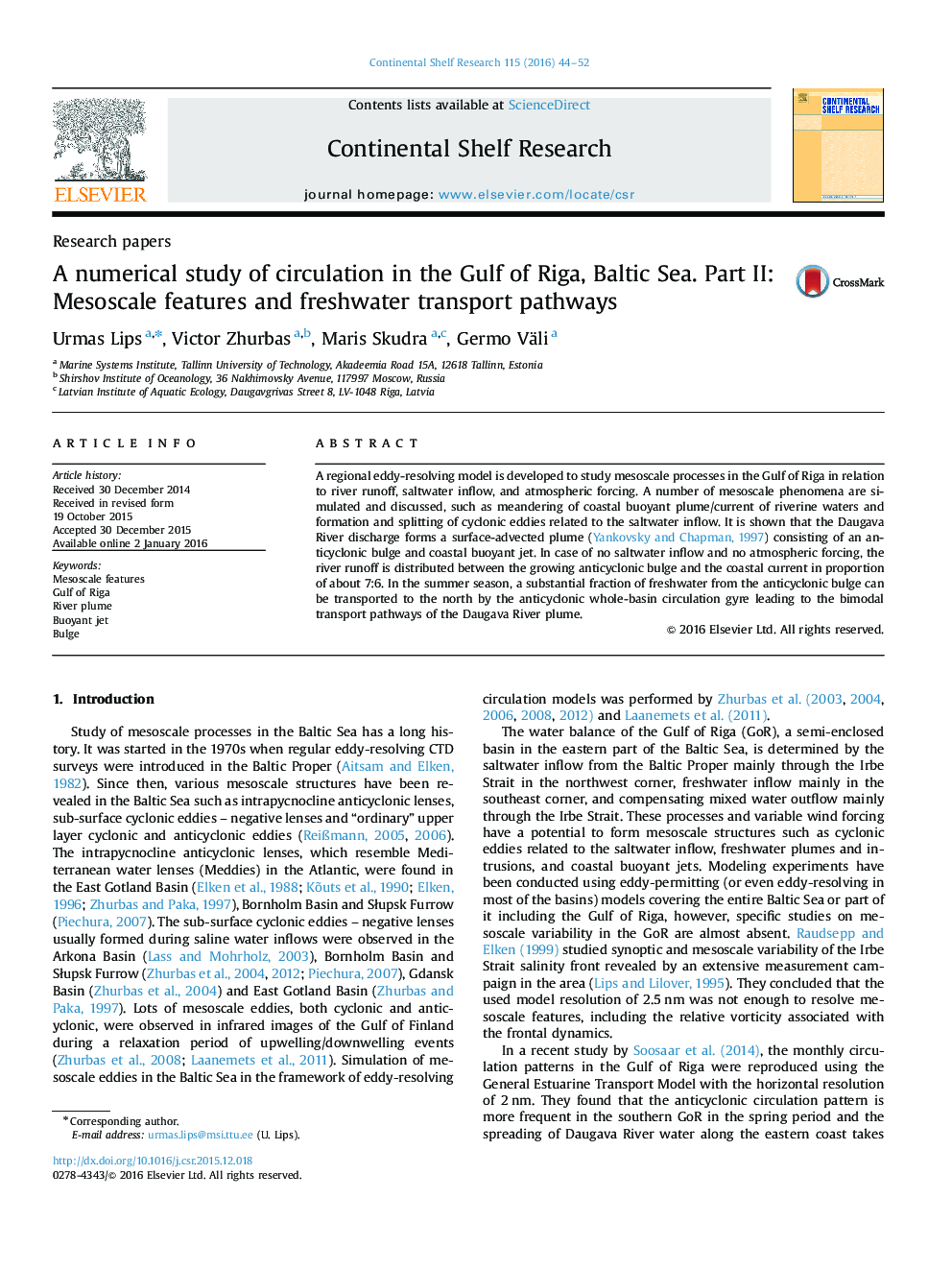| کد مقاله | کد نشریه | سال انتشار | مقاله انگلیسی | نسخه تمام متن |
|---|---|---|---|---|
| 4531645 | 1626098 | 2016 | 9 صفحه PDF | دانلود رایگان |

• Daugava River discharge forms an anticyclonic bulge and coastal buoyant jet.
• The coastal current falls into baroclinic instability under variable wind conditions.
• Part of the bulge water involves into the anticyclonic whole-basin circulation gyre.
• Bimodal transport pathways of the Daugava River plume are formed in summer.
A regional eddy-resolving model is developed to study mesoscale processes in the Gulf of Riga in relation to river runoff, saltwater inflow, and atmospheric forcing. A number of mesoscale phenomena are simulated and discussed, such as meandering of coastal buoyant plume/current of riverine waters and formation and splitting of cyclonic eddies related to the saltwater inflow. It is shown that the Daugava River discharge forms a surface-advected plume (Yankovsky and Chapman, 1997) consisting of an anticyclonic bulge and coastal buoyant jet. In case of no saltwater inflow and no atmospheric forcing, the river runoff is distributed between the growing anticyclonic bulge and the coastal current in proportion of about 7:6. In the summer season, a substantial fraction of freshwater from the anticyclonic bulge can be transported to the north by the anticyclonic whole-basin circulation gyre leading to the bimodal transport pathways of the Daugava River plume.
Journal: Continental Shelf Research - Volume 115, 1 March 2016, Pages 44–52